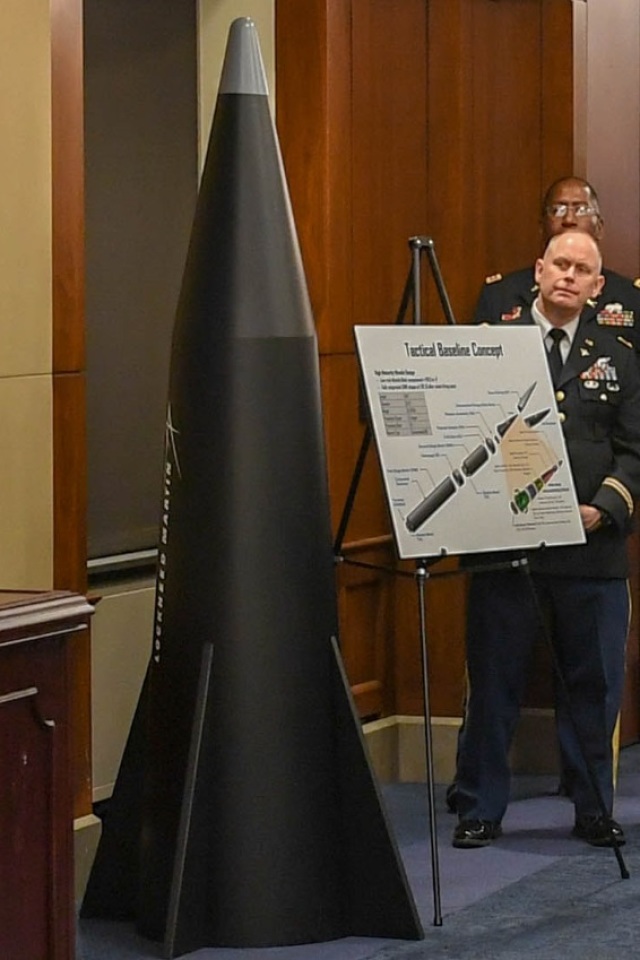?? You mean.. an MaRV? The LRHW is an HGV.
Are you maybe confusing it with the earlier PGS which was an MaRV?
Nope. It's definitely not a proper HGV. Not even close. Has it occurred to you that the government, military, and MIC in the US are only calling it an HGV because they don't want to appear like they're are THAT far behind China? Kind of like when AT&T called fake 5G actual 5G.
This is the common-hypersonic glide body carried by the LRHW:
This is what an actual HGV looks like (scroll down on the CSIS page as the pictures are lower down):
Notice anything distinctively different about the shaping? Do you understand how that will contribute to the "gliding" phase? One is a cone with fins all around it. The other has a wide flat bottom with two tapered sides and round top. There is no question that the common-hypersonic glide body will be shit at gliding and is just an American version of DF-21D. To be fair, it makes sense that the US would want this capability, as China also mastered it first before moving on to a proper HGV. Not to mention the US lacks the robust hypersonic wind tunnel infrastructure that China already has.
I remember reading a bit into the difference between US wind tunnels and China's new wind tunnels. If I recall correctly, the US wind tunnels can run longer tests at supersonic (but not hypersonic) speeds and the Chinese wind tunnels can run shorter tests at hypersonic speeds. My guess is wind tunnels that can run longer tests at hypersonic speeds just weren't technically feasible or cost-effective, so running numerous shorter tests at the required hypersonic speeds was the Chinese compromise.
As for why the US has fallen behind in wind tunnels...well...my guess is because all their best and brightest work in business, AI, software, law, finance, medicine, or even dentistry. The quality talent just isn't there anymore. And/or the contractors sold a fantasy to the government that supercomputer simulations and real world testing alone are enough, so there's no need to build hypersonic wind tunnels. Given even China takes a LONG time to design and build hypersonic wind tunnels (if I recall correctly, 5+ years from start to finish), it would probably take the US 20+ years lol. My opinion is that you need supercomputer simulations, wind tunnel testing, AND real world testing to work out all the kinks and cross-validate results across different prototype designs. Only then can you finally select and further refine the most appropriate one.



